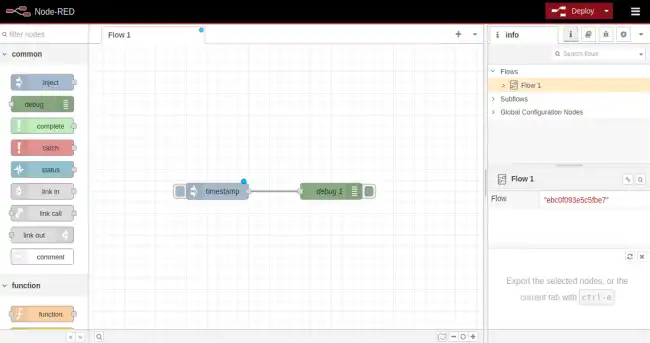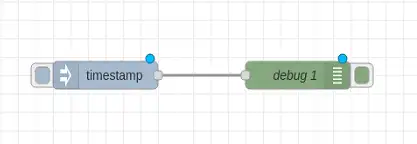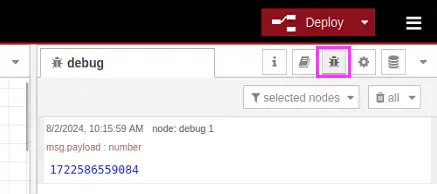What is Node-RED?
Node-RED is a flow-based development tool that allows connecting devices and services visually through a web browser.
Originally created by IBM, Node-RED is designed to facilitate the integration of IoT services and automation through a drag-and-drop graphical interface.
Node-RED allows us to create our “programs” through visual workflows via a very simple graphical interface. This facilitates the integration of different services and devices without the need to write extensive code.

Main features of Node-RED:
- Visual Interface: Uses a browser-based graphical interface to design workflows.
- Drag and Drop: Allows dragging nodes and connecting them to define flow logic.
- Integration: Supports a wide variety of protocols and services, such as HTTP, MQTT, and more.
- Extensible: Offers a wide range of nodes for different purposes and allows the creation of custom nodes.
For more information and resources about Node-RED, you can visit Node-RED’s official documentation.
Installing Node-RED on Raspberry Pi
To install Node-RED on our Raspberry Pi, we follow these steps. As always, it’s advisable to first update the existing packages on the system.
sudo apt update
sudo apt upgradeThen, we install Node-RED using the official installation script provided by the project. We run the following command to download and install Node-RED:
bash <(curl -sL https://raw.githubusercontent.com/node-red/linux-installers/master/deb/update-nodejs-and-nodered)This script will take care of installing Node.js (if it is not already installed) and Node-RED on our Raspberry Pi.
To ensure that Node-RED starts automatically when the Raspberry Pi boots up, we run the following command:
sudo systemctl enable nodered.serviceFinally, we can start Node-RED with the following command:
node-redIf you want to try it on a computer, you can install it simply withsudo npm install -g --unsafe-perm node-red
Basic Use of Node-RED
Once installed, you can access the Node-RED user interface from a web browser at http://<IP-of-your-Raspberry-Pi>:1880. This is where you will build your workflows.

To create a workflow in Node-RED, simply drag the nodes you want to use from the node palette on the left side of the screen and connect them to each other.
Then, we can configure each node to suit our specific needs. To do this, we click on it, and in the palette on the right, the available options will appear.
For example, if we want to read the value from a sensor and publish it on a social network, we could drag a sensor node, a social media publishing node, and connect them to each other.
Next, we would configure the sensor node to read the specific sensor we are using and the social media publishing node to connect to our Twitter or Facebook account.
Finally, once we have created our workflow, we can deploy (run) it. To do this, we click the “Deploy” button to implement it and start processing data.
We can also access the processed data and visualize it in graphs and tables using the visualization nodes available in the node palette.
Example Workflow
Let’s create a simple flow that injects a message and displays it in the debug console:
- Drag an “Inject” node; this node allows us to input text.
- Drag a “Debug” node; this node allows us to see text in the Debug window.
- Connect the “Inject” node to the “Debug” node.

This flow simply uses an Inject node to generate text that we send to Debug for visualization. By default, if we do not change the configuration, the Inject mode simply generates a Timestamp (the current time).
Now we turn on the Debug tab and click the “Deploy” button to deploy the flow. When we activate the “TimeStamp” node (by clicking on the blue square on the left), we will see the message appear in the Debug tab.

Device Integration
Node-RED is well integrated with Raspberry Pi and can directly access its GPIO for readings or generating outputs.
To do this, we first need to install the Raspberry Pi GPIO node library to control the GPIO pins of the Raspberry Pi:
- Open the node menu and search for “node-red-node-pi-gpio”.
- Click “Install” to add this node to your Node-RED instance.
Once installed:
Add a “GPIO Output” node to your flow.
Configure the “GPIO Output” node to control a specific pin of the Raspberry Pi (for example, GPIO pin 17).
Connect the “Inject” node to the “GPIO Output” node.
Deploy the flow.
Now, when you send a message from the “Inject” node, GPIO pin 17 will change state, turning a connected LED on or off.
